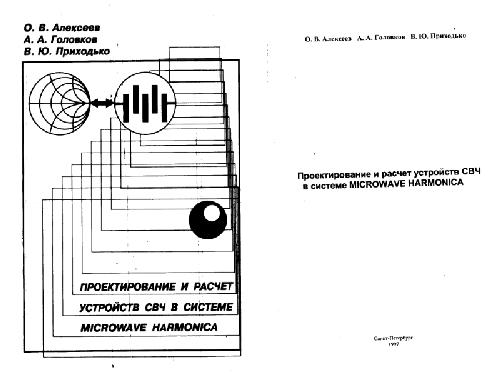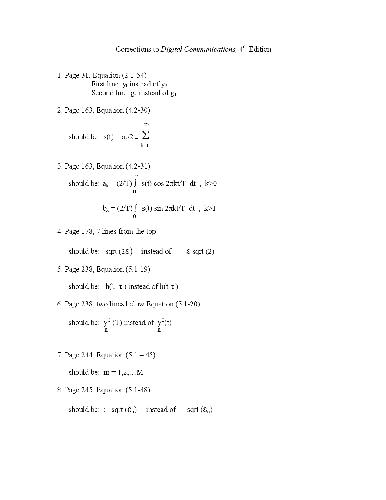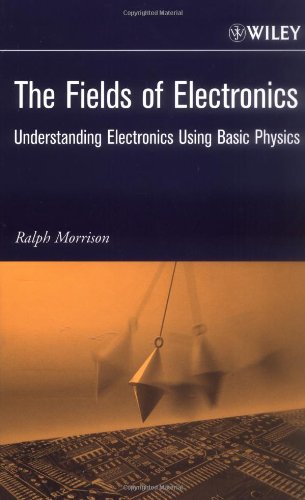Geraldine Cogin Schwartz, K.V. Srikrishnan, Arthur Bross0824799666, 9780824799663, 9780585399843, 1574446746, 9781574446746
Table of contents :
dk4124fm.pdf……Page 1
HANDBOOK OF SEMICONDUCTOR INTERCONNECTION TECHNOLOGY, Second Edition……Page 2
Preface……Page 4
The Editors……Page 6
Contributors……Page 7
Contents……Page 8
CONTENTS……Page 9
Table of Contents……Page 0
1.2 EVAPORATION……Page 10
1.3.1 Introduction……Page 14
1.3.3.1 Classification……Page 15
1.3.3.2 Examples of Reactors……Page 16
1.4 PHOTOENHANCED CVD……Page 17
1.5.2 Capacitively Coupled RF Glow Discharge……Page 20
1.5.2.2 Reactor Requirements……Page 21
1.5.2.3 Capacitively Coupled Reactors……Page 22
1.5.2.4.2 Multipoles……Page 26
1.5.3.1 Heating……Page 27
1.5.3.2 Temperature Control……Page 28
1.5.4.2.1 Sputtering Target……Page 29
1.5.4.2.5 Effect of Operating Conditions……Page 31
1.5.4.2.8 Reactive Sputtering……Page 32
1.5.4.2.11 Self-Sputtering……Page 33
1.5.4.3.2 Applications Other Than Pattern Transfer……Page 34
1.5.4.3.3 Pattern Transfer……Page 35
1.5.5 Angular Dependence of Sputtering Yield……Page 36
1.5.6.1 Introduction……Page 38
1.5.6.2.1 Principles of ECR……Page 39
1.5.6.2.3 Uniformity in a Divergent Field ECR Reactor……Page 40
1.5.6.3.1 Introduction……Page 41
1.5.6.3.2 Principles……Page 42
1.5.6.3.3 Ionized Metal Plasma (IMP) Deposition……Page 44
1.5.6.4 Helicon Sources……Page 45
1.5.6.5 Concluding Remarks about High-Density Reactors……Page 46
1.5.7.2 Mechanisms……Page 47
1.5.7.3.1 Capacitively Coupled Discharges……Page 48
1.5.7.3.2 High-Density Plasmas……Page 49
1.5.8.1 Introduction……Page 50
1.5.8.2 Mechanisms……Page 51
1.5.8.4 Reactive Ion Etching (RIE) or Reactive Sputter Etching (RSE)……Page 52
1.5.8.7 Profile Control……Page 53
1.5.8.8 Masking……Page 56
1.5.8.9 Loading Effect……Page 57
1.5.8.11 Angular Dependence of the RIE Yield……Page 58
1.6.1 Electroless Plating……Page 59
1.7 SPIN COATING……Page 61
REFERENCES……Page 63
CONTENTS……Page 71
2.1 INTRODUCTION……Page 75
2.2.2 Ellipsometry……Page 77
2.2.3.1 Principles of Optical Interference……Page 79
2.2.4 Prism Coupler……Page 80
2.3 INFRARED (IR) SPECTROSCOPY……Page 81
2.3.2.1 Dispersion Spectrometers……Page 82
2.3.3 Application to SiO2……Page 83
2.3.3.1 Detection/Measurement of Impurities……Page 85
2.3.3.2 Detection/Measurement of Dopants……Page 86
2.3.5 Quantitative Measurements of Spectra……Page 87
2.4.1 Introduction……Page 88
2.4.2.2.2 Eddy Currents……Page 89
2.4.2.3 Temperature Dependence……Page 90
2.4.3.3 Contributors to Via Resistance……Page 91
2.5.2 Early Methods……Page 92
2.5.5 Pump and Probe: Pulsed Picosecond Ultrasonic Technique……Page 93
2.6.2 Measurement……Page 94
2.6.4 Dissipation Factor……Page 95
2.8.1 Introduction……Page 96
2.8.2.3 Scratch Test……Page 97
2.8.2.4 Blister Technique……Page 98
2.9.3.1 Introduction……Page 99
2.9.3.2.2 Curvature……Page 100
2.9.3.2.4 Other Methods……Page 102
2.9.4.1 Nanoindentation……Page 103
2.9.4.2 Surface Acoustic Waves (SAW)……Page 104
2.9.4.3 Ellipsometric Porosimetry (EP)……Page 105
2.9.5 Poisson’s Ratio (nu)……Page 107
2.9.7.4 IR Spectroscopy (for SiO2)……Page 108
2.10.2 Coefficient of Thermal Expansion (TCE or alphaf)……Page 109
2.10.3 Thermal Conductivity……Page 110
2.10.3.1.2 3omega Method……Page 111
2.10.4.1 Organic Films……Page 113
2.11.2 Principles……Page 114
2.11.3 The Auger Spectrum……Page 115
2.11.4 Applications……Page 117
2.12.3 XPS Spectrum……Page 120
2.12.5 Ultraviolet Photoelectron Spectroscopy (UPS)……Page 123
2.13.3.1 Secondary Neutral Mass Spectrometry (SNMS)……Page 124
2.14.1 Basis of Method……Page 125
2.14.2 Modes of Operation……Page 126
2.15.2 Spectrometers……Page 127
2.16.2.1 1H + 15N……Page 128
2.16.5 Other Techniques……Page 129
2.17.2 Principles/Description……Page 130
2.17.4 Forward Recoil Scattering……Page 132
2.18 SPECULAR X-RAY REFLECTIVITY (SXR)……Page 133
2.19 SMALL-ANGLE NEUTRON SCATTERING (SANS)……Page 136
2.20 POSITRONIUM ANNIHILATION LIFETIME SPECTROSCOPY (PALS)……Page 137
2.21 ELLIPSOMETRIC POROSIMETRY (EP)……Page 138
2.22.4 Examination of Cross-Sections……Page 139
2.23.3.1 Electron Energy-Loss Spectroscopy (EELS)……Page 141
2.24.2 Description……Page 143
2.25 ATOMIC FORCE MICROSCOPE (AFM)……Page 144
2.27.1 Introduction……Page 145
2.27.3 Diffraction Pattern……Page 146
2.28.2 Analysis……Page 147
2.30.2 Inductively Coupled Plasma Atomic Emission Spectroscopy (ICP-AES)……Page 148
2.31.2.3 Pyrometry……Page 149
2.32.1 Introduction……Page 150
2.32.3.2.1 Chromatography……Page 151
2.32.3.2.4 CVS + AC Voltammetry……Page 152
2.33.1.3 Actinometry……Page 153
2.33.2.2 Langmuir Probes……Page 154
REFERENCES……Page 155
CONTENTS……Page 161
3.1 INTRODUCTION……Page 162
3.2 IMPORTANCE OF CONTACT TECHNOLOGY……Page 163
3.3.1 Barrier Heights……Page 164
3.3.2 Contact Resistance……Page 166
3.3.3 Berger Test Site……Page 169
3.4.1 Aluminum–Silicon Metallurgical Reactions and Effect on Barrier Heights, Contact Resistance, and Leakage……Page 171
3.4.2 Silicide Formation……Page 176
3.4.2.1.1 PtSi Application: Bipolar Emitter Contacts……Page 177
3.4.2.1.2 PtSi Application: Schottky Barrier Diode (SBD)……Page 178
3.4.2.3 Titanium Silicide/Titanium Nitride……Page 179
3.4.2.4 Cobalt Silicide……Page 184
3.4.2.5 Nickel Silicides……Page 187
3.4.2.6 Snow Plow Effect……Page 188
3.4.3.1 TiW Films……Page 189
3.4.3.2 TiN and TiNxOy Films……Page 190
3.4.3.3 TaSi2……Page 191
3.5.1 Metal/Silicon……Page 192
3.5.1.3 Cermet Barrier Contact……Page 193
3.5.1.4 Metal-to-Metal Contacts……Page 195
3.5.1.7 TiN/Ti Contacts……Page 196
3.5.2 Self-Aligned Structures……Page 197
3.5.3.1 Etching……Page 199
3.5.4.1 Interconnection……Page 202
3.6 ACTIVE DEVICE CONTACTS……Page 203
3.6.1.2 Al/NiSi……Page 204
3.6.1.6 Selective CVD W……Page 205
3.6.2.1 Guard Rings……Page 206
3.6.2.2 Hybrid Structures……Page 207
3.6.2.3 Resistor and Diode Structures……Page 208
3.6.3.1 Silicon Damage Effects……Page 209
3.6.4 Electrical Measurements……Page 210
3.7 CONTACT STUDS FOR ULSI……Page 211
3.8 CONCLUSIONS……Page 213
REFERENCES……Page 214
CONTENTS……Page 219
4.1 INTRODUCTION……Page 221
4.2.1 SiO2: Introduction……Page 223
4.2.2.1 RF Sputtered SiO2……Page 224
4.2.3.1 Inorganic Precursors……Page 226
4.2.3.2 Organic (Organosilane) Precursors……Page 227
4.2.4.1 Capacitively Coupled Plasmas; Bell Jar Reactors……Page 230
4.2.4.2.2 TEOS-Based Oxides……Page 231
4.2.4.2.3 Moisture Absorption……Page 232
4.2.4.3.1 TEOS-Based Oxide……Page 233
4.2.4.4 High-Density Plasmas……Page 234
4.2.4.4.1 ECR……Page 235
4.2.4.4.2 Helicon Plasmas……Page 236
4.2.5.1 Evaporation……Page 237
4.2.5.3 Ion Beam Deposition……Page 238
4.2.5.6 Liquid-Phase Deposition (LPD)……Page 239
4.2.6.1 PSG……Page 240
4.2.6.2 BSG……Page 241
4.2.7 F-Doped SiO2……Page 244
4.2.8.1 Hydrogen……Page 250
4.2.8.2 Argon……Page 252
4.2.9.4 Etch Mechanism……Page 253
4.2.9.5 Etch Gases……Page 254
4.2.9.6 Selectivity……Page 255
4.2.9.7 Profile Tailoring……Page 257
4.2.9.9 Feature-Size Dependence of Etch Rate……Page 258
4.2.9.9.1 RIE Lag……Page 259
4.2.9.9.4 Conclusions……Page 261
4.2.9.10 Angular Dependence of RIE Rates……Page 262
4.2.10 Silicon Nitride……Page 264
4.2.13 Boron Nitride……Page 265
4.3.1 Introduction……Page 266
4.3.3 Polysiloxanes……Page 267
4.4.1 Introduction……Page 268
4.4.2.2 Synthesis and Structure……Page 269
4.4.2.3 Thermal Properties……Page 271
4.4.2.4 Adhesion/Interface Reactions……Page 272
4.4.2.5 Mechanical Properties……Page 273
4.4.2.6.1 Electrical Conduction……Page 274
4.4.2.6.2 Breakdown……Page 275
4.4.4 Parylenes……Page 276
4.4.5 Poly(arylene ether)s (PAEs)……Page 278
4.4.6 Fluorinated Amorphous Carbon Films (alpha-C:F)……Page 279
4.4.7 Silsesquioxanes (SSQs)……Page 281
4.4.7.1 Hydrogen Silsesquioxane (HSQ)……Page 282
4.4.7.3 Methyl Hydrogen Silsesquioxane (MHSQ)……Page 284
4.4.9 Polynorbornene……Page 285
4.4.10 Amorphous Silicon Oxycarbide (alpha-SiC–O:H)……Page 286
4.4.11 Diamond-Like Carbon (DLC) Films/Fluorinated DLC……Page 287
4.4.13.1 SiLK……Page 288
4.6.1 Introduction……Page 289
4.6.2 Silica Xerogels……Page 291
4.6.4 Porous HSQ……Page 294
4.6.5 Porous MSQ……Page 295
4.6.6 Porous Poly(aryl ether)……Page 296
4.6.10 Interpenetrated SOG (IPS)……Page 297
4.6.12 Air Gaps……Page 298
4.7 PLASMA-ASSISTED ETCHING OF ORGANIC FILMS……Page 299
4.8.2 Films Containing No Silicon……Page 301
4.8.3.3 Xerogels……Page 302
4.8.3.5 BCB……Page 303
4.9 CONCLUSIONS……Page 304
REFERENCES……Page 305
CONTENTS……Page 318
5.1 INTRODUCTION……Page 320
5.2.2.1.1 Inorganic Precursor……Page 321
5.2.2.1.2 Organic Precursors……Page 322
5.2.2.2.2 DMAH……Page 323
5.3.2.1 Film Properties……Page 324
5.3.2.2 CVD of AlCu……Page 325
5.4.1.3 Oxidation……Page 327
5.4.1.4 Liners and Barriers……Page 328
5.4.1.6.1 Introduction……Page 329
5.4.1.7.1 Ta/TaNx……Page 330
5.4.1.7.3 Other Liners……Page 332
5.4.2 Physical Vapor Deposition of Cu……Page 333
5.4.3.2 Cu(I) Precursors……Page 334
5.4.3.3 Cu(II) Precursors……Page 335
5.4.3.4.1 Blanket Deposition Using (hfac)Cu(vtms)……Page 336
5.4.3.4.2 Selective Deposition……Page 337
5.4.3.5 Film Growth and Morphology……Page 338
5.4.3.7 Atomic Layer Deposition (ALD)……Page 339
5.4.4.2 Seed Layer Deposition……Page 340
5.4.4.4.1 Introduction……Page 341
5.4.4.4.2 Processes……Page 342
5.4.4.4.3 Film Properties……Page 346
5.5.2.1 Introduction……Page 347
5.5.2.2.1 Reduction by H2……Page 348
5.5.2.3.1 Reducing Agents……Page 349
5.5.2.3.2 Mechanisms……Page 353
5.5.2.4 Preferred Method of Deposition……Page 354
5.6.4.1 Lift-Off……Page 355
5.6.5.1 Introduction……Page 357
5.6.5.2.2 Native Oxide Removal: Initiation or Induction Period……Page 358
5.6.5.2.3 Anisotropic Etching……Page 359
5.6.5.3 Practical Etchants……Page 360
5.6.5.6 Al Alloy Etching……Page 361
5.6.5.6.1 Cu-Containing Residues……Page 362
5.6.5.7 Loading and Feature Size-Dependent Etching……Page 363
5.6.5.8 Profile Control……Page 364
5.6.5.9 Corrosion Control……Page 365
5.6.5.11 Temperature Effects……Page 367
5.7.1 Introduction……Page 368
5.7.3.3 Embedment……Page 369
5.8.3 Reactive Ion Etching……Page 370
5.9.1 Hillocks……Page 371
5.9.2.1 Evaporated Films……Page 372
5.9.2.4 Effect of Oblique Incidence……Page 373
5.9.2.5 Grain Structure of Electroplated Cu Films……Page 374
5.10 CHAPTER SUMMARY……Page 377
REFERENCES……Page 379
CONTENTS……Page 391
6.2.1 Overview……Page 394
6.2.2.2.2 Lithographic……Page 395
6.4.1 Characterization……Page 397
6.4.2.1 Models……Page 398
6.4.2.2 Improvements……Page 399
6.5.2.2 Gap-Fill……Page 400
6.5.3.2 Planarization and Gap-Fill……Page 401
6.5.4 Biased High-Density PECVD……Page 402
6.8 EVAPORATION……Page 403
6.9.1 Bias Sputtering……Page 406
6.9.2 Simulations of Bias Sputtering……Page 407
6.9.3.2 Low Bias……Page 408
6.9.3.4.2 Mechanisms……Page 409
6.10.1 Collimated Sputtering……Page 410
6.10.3 Hollow Cathode-Enhanced Sputtering……Page 411
6.11.3 Inductive Plasma: Ionized Metal Plasma (IMP) Deposition……Page 412
6.13.3 Modification of Underlay……Page 414
6.14.1.3 Blanket CVD……Page 415
6.14.1.3.2 Etchback……Page 416
6.14.2.2 Selective Deposition……Page 417
6.15 ELECTROCHEMICAL DEPOSITION OF COPPER……Page 418
6.16.2.2 Sputtered Metal……Page 419
6.16.2.5 Electroless Metal Fill……Page 420
6.16.3.1 Process Steps……Page 421
6.16.3.2 Problems……Page 423
6.16.3.3 Cleaning……Page 424
6.17.2 Principles……Page 425
6.17.3 Models……Page 427
6.17.4 Role Of Electrostatic Forces……Page 428
6.17.5.1 Polishers……Page 429
6.17.5.2 Consumables……Page 431
6.17.5.3 Endpoint Detection……Page 434
6.18.2.1 Slurry-Free……Page 436
6.18.3 Silicon Nitride……Page 437
6.19.2 F-Doped SiO2……Page 438
6.19.4 Vapor Deposited alpha-SiCOH Films……Page 439
6.19.5 Organic Films……Page 440
6.20 CMP OF METALS……Page 441
6.20.1 CMP of Tungsten……Page 442
6.20.2 CMP of Aluminum (Alloys)……Page 443
6.20.3 CMP of Cu……Page 444
6.20.3.1.1 Abrasive-Free (AF) (Slurry-Free Polishing in a CMP Apparatus)……Page 445
6.20.3.2.1 Introduction……Page 446
6.20.3.2.2 Electrochemical Planarization (ECP)……Page 447
6.21 POST-CMP CLEANING……Page 448
6.22.1 Nonuniformities……Page 449
6.22.3 Usage and Disposal of Water……Page 453
6.23 IMPACT OF CMP……Page 454
6.25.1 Overview……Page 455
6.26 PROCESS/STRUCTURE CHOICE CONFLICTS……Page 456
6.27 PROCESSES……Page 460
6.28 RELIABILITY……Page 461
6.28.1 Defects……Page 462
6.28.2 Insulator Reliability……Page 463
6.28.4 Device Reliability……Page 464
6.29 MANUFACTURABILITY……Page 465
6.31 CONCLUDING REMARKS ON COMPATIBILITY OF MATERIALS AND PROCESSING……Page 466
REFERENCES……Page 467
CONTENTS……Page 476
7.2.1 Overview……Page 477
7.2.2.1.1 Driving Forces for Diffusion……Page 478
7.2.2.1.2 Electromigration-Induced Failure……Page 481
7.2.3 Electromigration Testing Techniques……Page 483
7.2.3.2 Effect of Thermal Stresses on Electromigration Failure……Page 488
7.2.3.3 Thermal (Stress) Voiding Testing Techniques……Page 489
7.3.1 Al Alloys/Layered Structures……Page 490
7.3.2 Copper……Page 492
7.3.2.1 Interfacial Electromigration……Page 494
7.3.3 Role of Passivating Films……Page 495
7.4.1 Overview of Interlevel Connectors……Page 497
7.4.2 Vias with No Barrier Layer in M2 Metal……Page 498
7.4.3.1 Tungsten Vias……Page 499
7.5.1 Introduction……Page 500
7.5.2 Reliability Measurements/Temperature and Humidity Stressing……Page 501
7.5.3 Corrosion Behavior of Al–Cu Conductors……Page 503
7.6.1 General Remarks……Page 504
7.6.3.1 General Remarks……Page 505
7.6.3.3 Is TDDB a Reliability Issue for Thick Insulators?……Page 506
7.7 CONCLUDING REMARKS……Page 507
REFERENCES……Page 508







Reviews
There are no reviews yet.